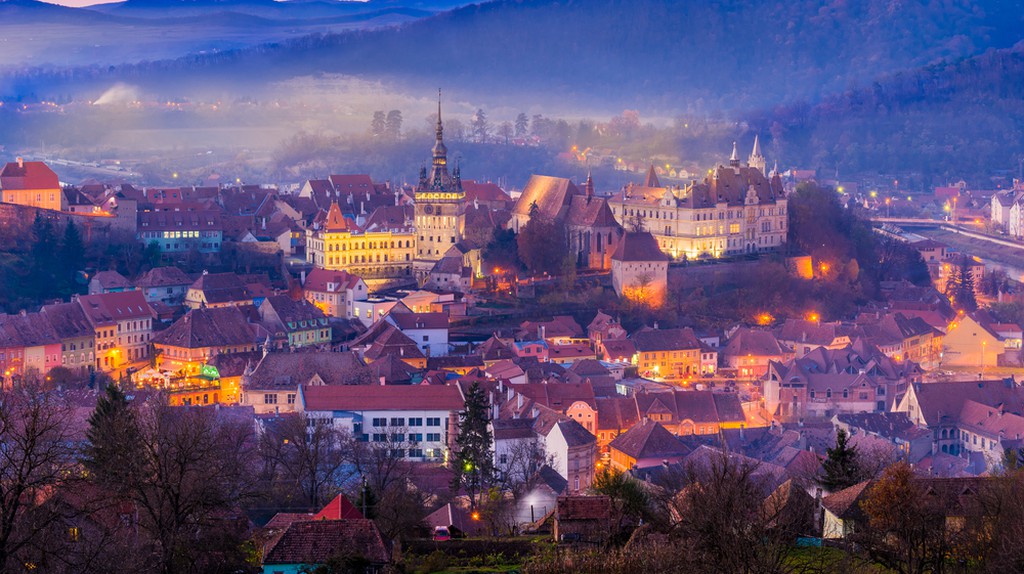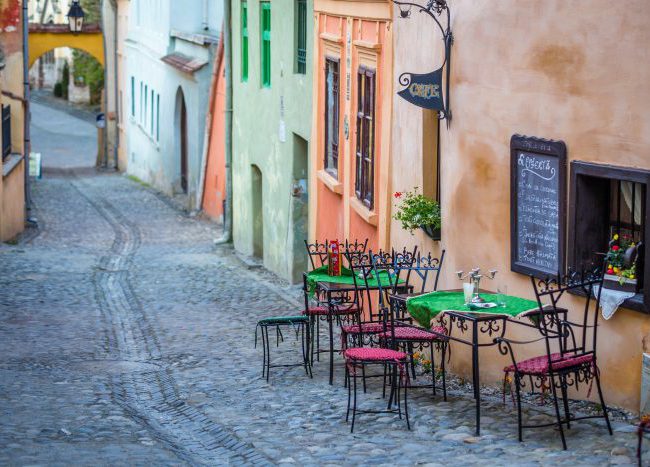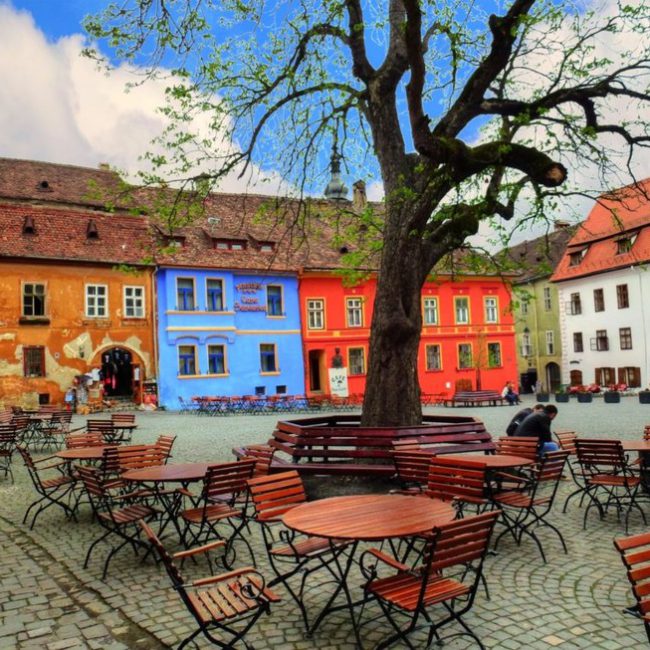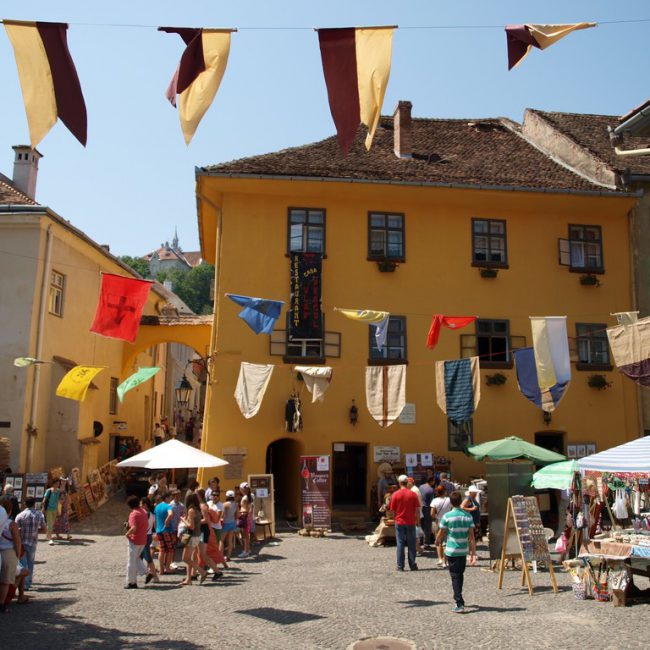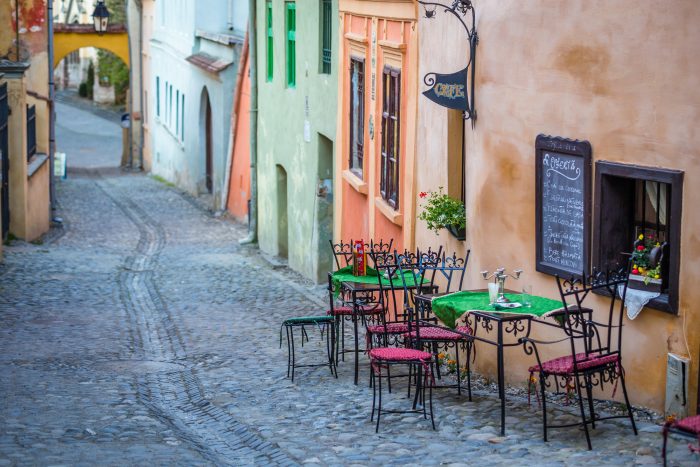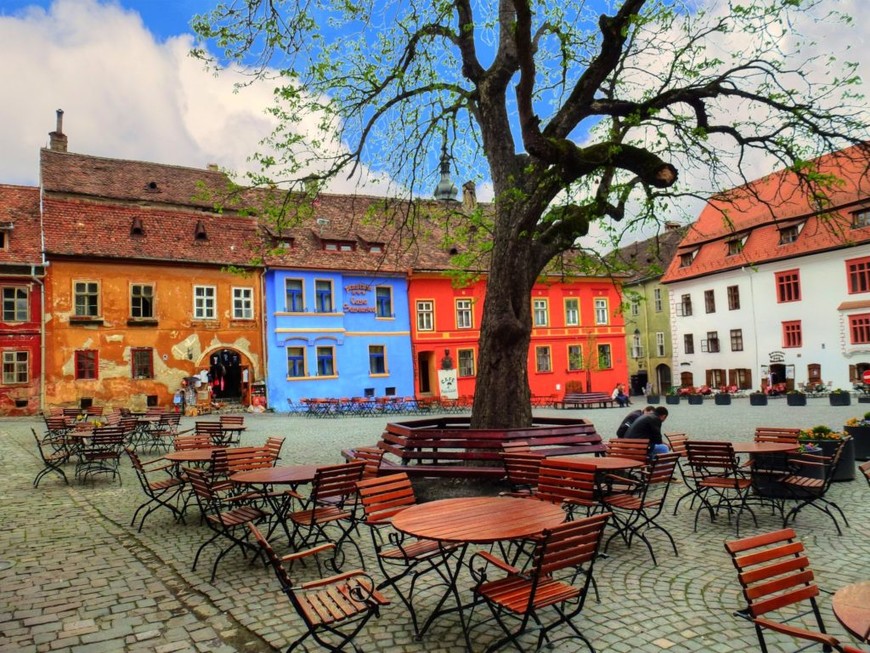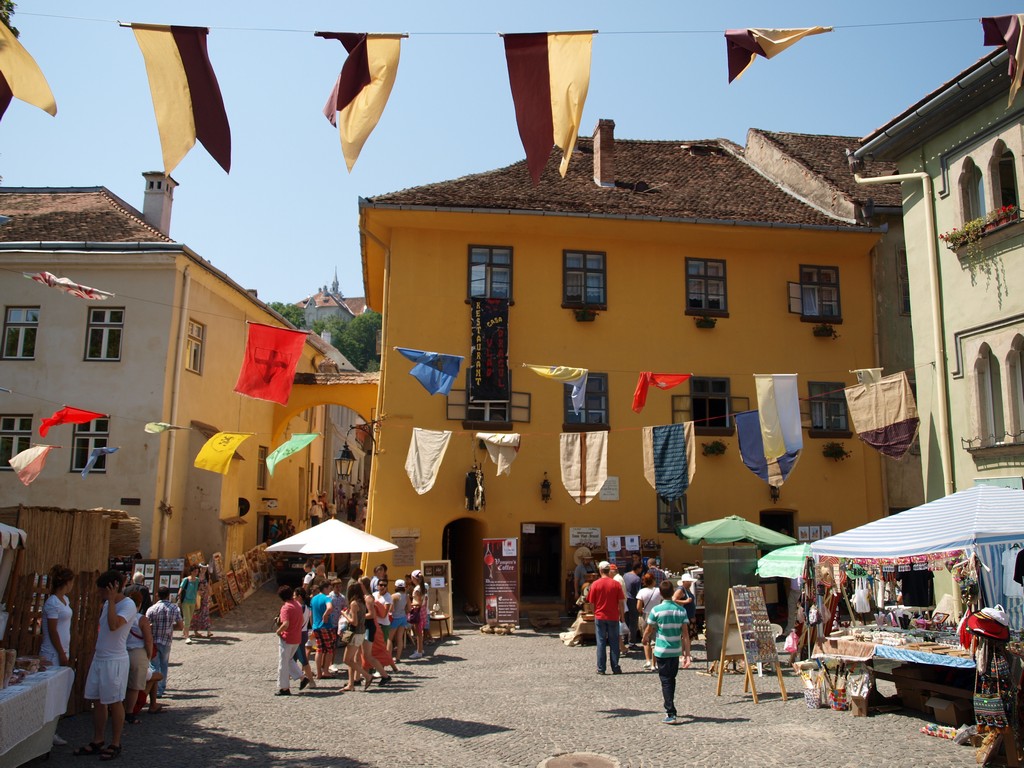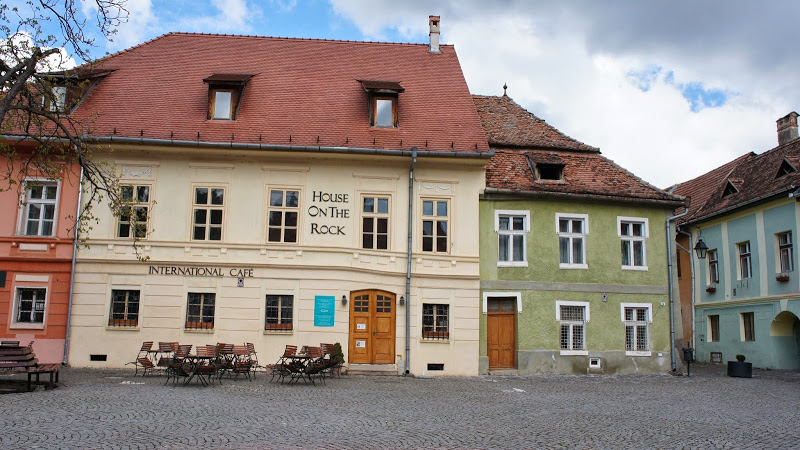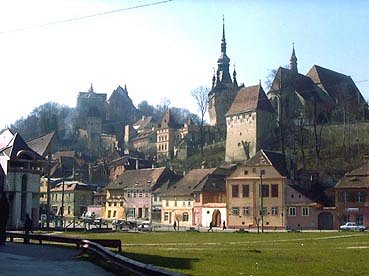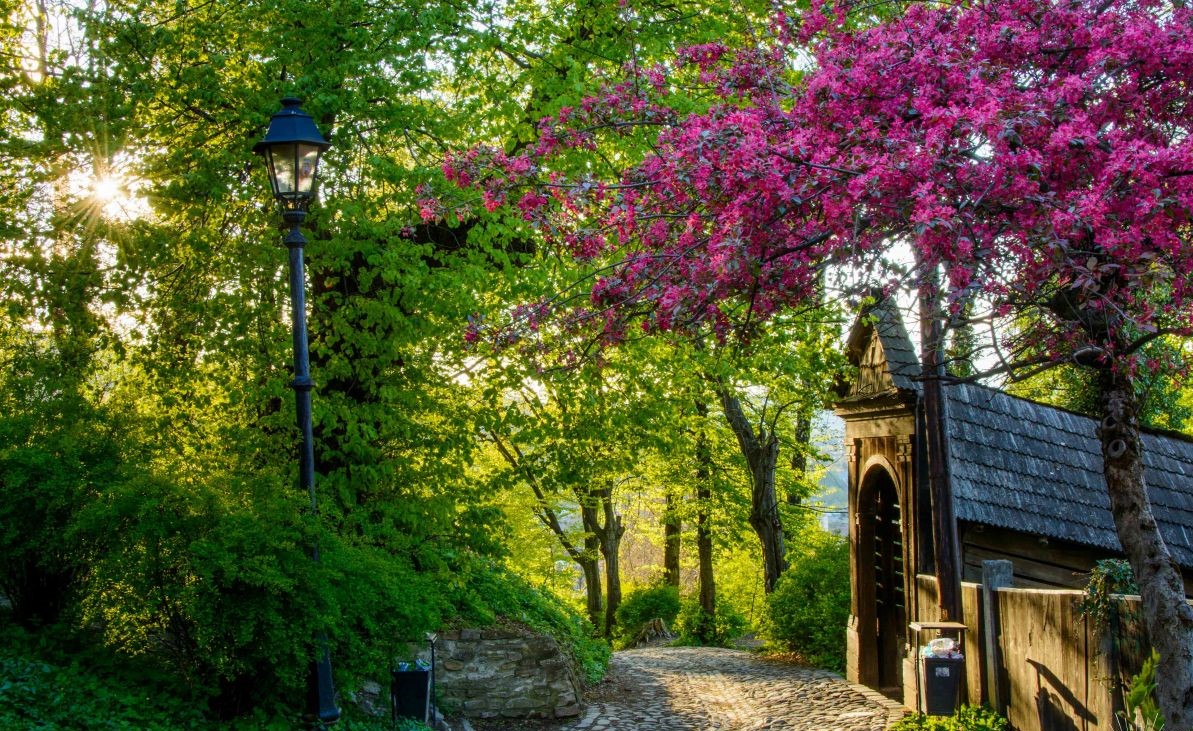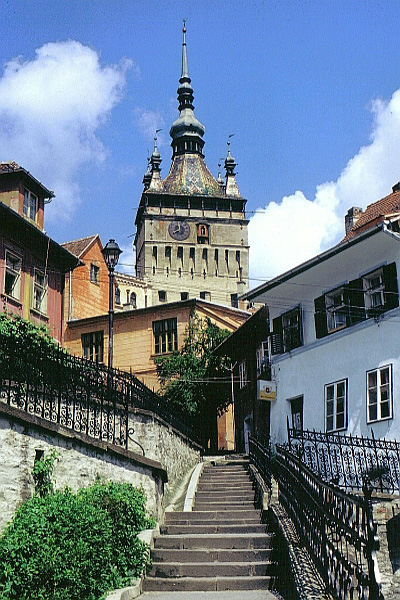Since its construction by the Saxon colonists in the thirteenth century, Sighișoara’s citadel has been incessantly inhabited even to this day. Included on the UNESCO Heritage List, the citadel is an outstanding illustration of a fortified medieval town, as well as a remarkable testimony of the Transylvanian Saxon’s culture, expressed through its superb architecture.
History of the City
The origins of Sighisoara city go back to Roman times.
During the First Century AD, the Dacians (ancient inhabitants of the territory of modern Romania which eventually will develop into the Romanian people), built a fortification called Sandava.
Known in German under the name Hermannstadt, Sibiu has always been the most important center of the German minority in Transylvania
Legend has it that the lost children of Hamelin came out of the ‘Almasch’ caves (Varghis) in Transilvania, somewhere near the nowadays location of Sibiu. This is the romanticized explanation of a unique phenomenon which explains the appearance of a blond-haired blue-eyed people on these lands, who spoke German and lived by the customs of peoples living thousands of kilometers away.
In effect, the fortresses and fortified villages in Transylvania were founded in the 12th century by immigrants coming from the Moselle valley area, known under the name of Saxons. The first documentary mentioning referring to the Sibiu area dates back from 1191, when Pope Celestine III confirmed the existence of the free prepositure of the Germans in Transylvania, the prepositure having its headquarters in Sibiu, named Cibinium at that time.
Brought here by the Hungarian kings, the Saxons were granted numerous rights and benefits in exchange for their help in defending the lands against the attacks of the Tatars and Turks. They created ‘the land of the 7 fortresses’, 7 fortified cities, as well as numerous villages in which fortified churches were erected to serve as a shelter in the event of an attack.
At the beginning of the 20th century, Sibiu is a vibrant city, tuned to the realities of its time, the third city in the Austro-Hungarian Empire using the electric lighting system and the second city in which the electric tram is produced. The first cinema house opens in 1909 and the first public toilets appear in 1910.
The name of the city is officially changed into Sibiu in 1919, and the streets received Romanian names as well. In 1945, after the Second World War, the deportation of the Germans to USSR began. A number of 2800 persons of German ethnicity were deported, many of them never to return. With but a few exceptions, the communist regime never tampered with the old city, and Sibiu becomes in 1968, under the same name, the county residents. On December 21st, 1989 the anti-communist demonstrations begin in Sibiu and continue on December 22nd. Sibiu was the second city in the country after Timisoara to rise against the communist dictatorship.
The origins of Sighisoara city go back to Roman times.
During the First Century AD, the Dacians (ancient inhabitants of the territory of modern Romania which eventually will develop into the Romanian people), built a fortification called Sandava.<br>
Under the Roman administration, it was known as Castrum Stenarum.<br>
During the 12th century, the Transylvanian Saxons built a new citadel which was named Schäßburg.
Sighisoara (Schäßburg - Schassburg or Schäsbrich in German) still stands as one of the most beautiful and best-preserved medieval towns in Europe.<br>
Designated as a World Heritage Site by UNESCO, this perfectly intact 16th-century gem with nine towers, cobbled streets, burgher houses, and ornate churches rivals the historic streets of Old Prague or Vienna for atmospheric magic. It is also the birthplace of Vlad Dracula, also known as Vlad Tepes (Vlad the Impaler), ruler of the province of Walachia from 1456 to 1462.
It was he who inspired Bram Stoker's fictional creation, Count Dracula.
His house is just one of the many attractions here. Others include the Church on the Hill with its 500-year-old frescoes, the 13th century Venetian House and the Church of the Dominican Monastery, known for its Transylvanian renaissance carved altarpiece, baroque pulpit, Oriental carpets and 17th-century organ.
Sighisoara's citadel was built in the 12th century, when it was known as Castrum Sex (Fort Six), and was further strengthened and extended in the 15th century.
In 1298, the town was mentioned as Schespurch, while in 1367 it was called Civitas de Seguswar.
The name of Sighisoara was first noted in a written document issued by Vlad Dracul,
Vlad the Impaler's father, in 1431.



